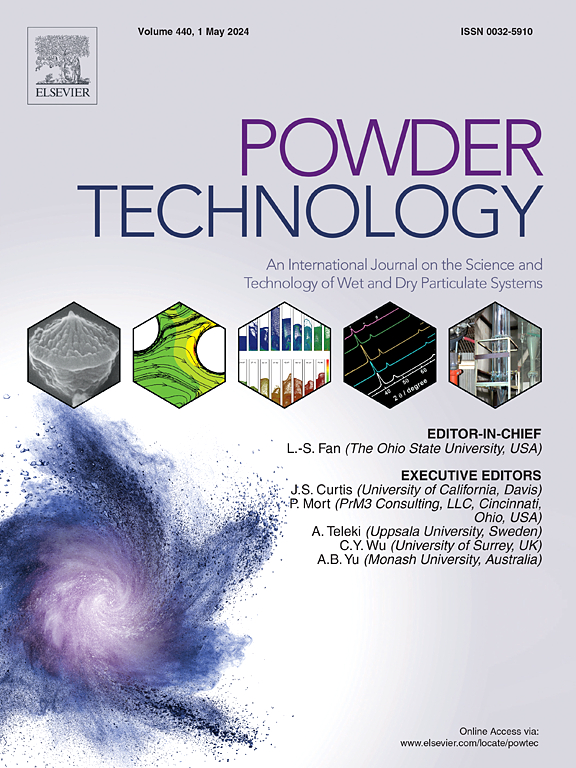An advanced calibration technique for contact parameters in ball milling DEM simulations
IF 4.5
2区 工程技术
Q2 ENGINEERING, CHEMICAL
引用次数: 0
Abstract
This article proposes an advanced calibration technique for contact parameters in ball mill DEM simulations, introducing 3 innovations. First, the friction coefficients between particles and grinding media are calibrated using the draw down test, accurately reflecting dynamic contact characteristics. Second, the coefficient of restitution is derived by combining both non-fracture and fracture conditions, using weighted calculations based on the distribution of fracture energy. Third, the minimum impact energy is defined using Tavares-King's damage-fracture model, setting it at the energy level that causes the cumulative fracture probability of the fine particle to exceed 50 % after 10 impacts, thereby avoiding meaningless data in the collision energy spectrum. These innovations may enhance DEM simulation accuracy by providing a more realistic mechanical environment for ball milling, laying a solid foundation for the application of the advanced comminution model.

求助全文
约1分钟内获得全文
求助全文
来源期刊

Powder Technology
工程技术-工程:化工
CiteScore
9.90
自引率
15.40%
发文量
1047
审稿时长
46 days
期刊介绍:
Powder Technology is an International Journal on the Science and Technology of Wet and Dry Particulate Systems. Powder Technology publishes papers on all aspects of the formation of particles and their characterisation and on the study of systems containing particulate solids. No limitation is imposed on the size of the particles, which may range from nanometre scale, as in pigments or aerosols, to that of mined or quarried materials. The following list of topics is not intended to be comprehensive, but rather to indicate typical subjects which fall within the scope of the journal's interests:
Formation and synthesis of particles by precipitation and other methods.
Modification of particles by agglomeration, coating, comminution and attrition.
Characterisation of the size, shape, surface area, pore structure and strength of particles and agglomerates (including the origins and effects of inter particle forces).
Packing, failure, flow and permeability of assemblies of particles.
Particle-particle interactions and suspension rheology.
Handling and processing operations such as slurry flow, fluidization, pneumatic conveying.
Interactions between particles and their environment, including delivery of particulate products to the body.
Applications of particle technology in production of pharmaceuticals, chemicals, foods, pigments, structural, and functional materials and in environmental and energy related matters.
For materials-oriented contributions we are looking for articles revealing the effect of particle/powder characteristics (size, morphology and composition, in that order) on material performance or functionality and, ideally, comparison to any industrial standard.
 求助内容:
求助内容: 应助结果提醒方式:
应助结果提醒方式:


